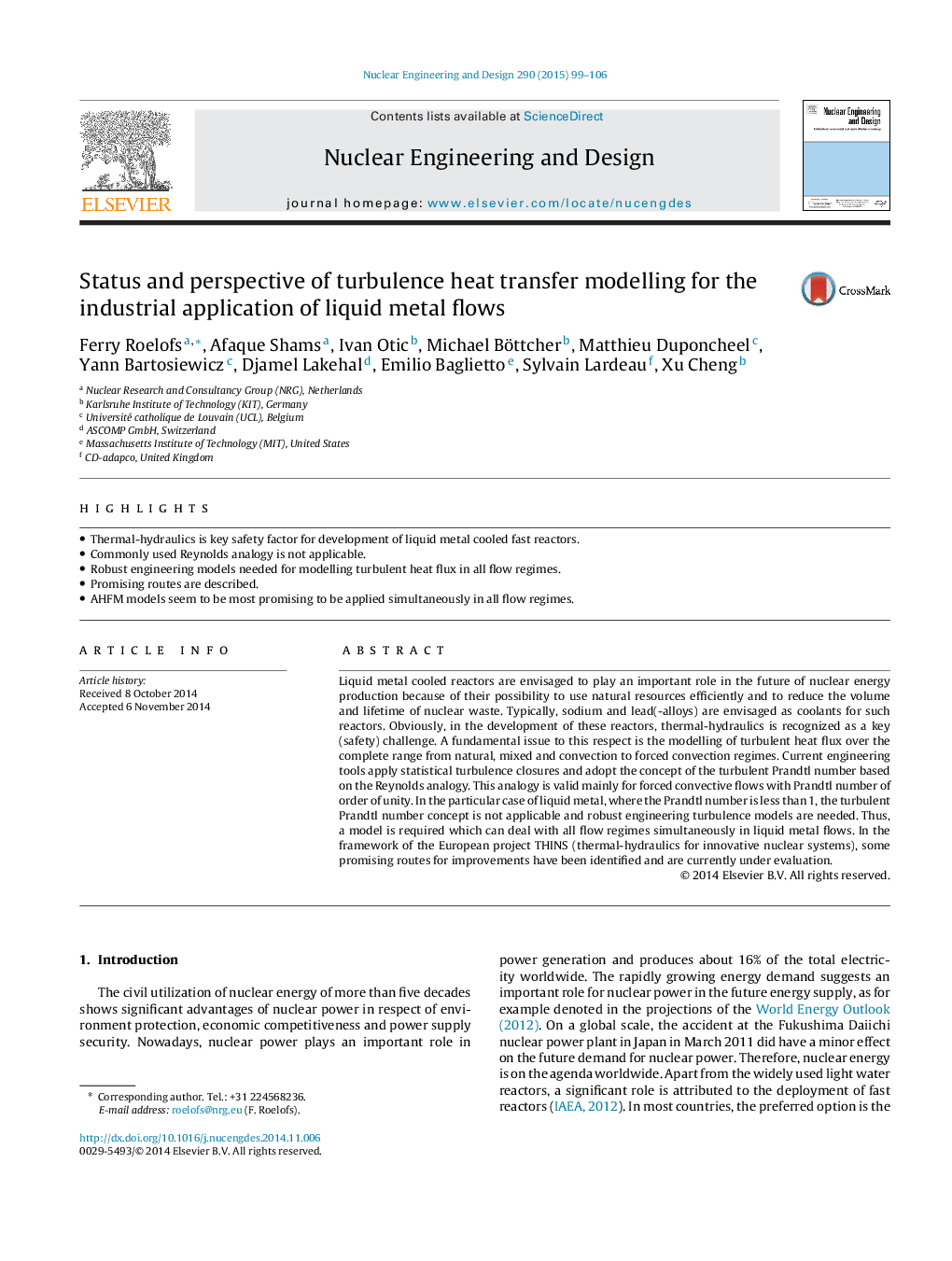| کد مقاله | کد نشریه | سال انتشار | مقاله انگلیسی | نسخه تمام متن |
|---|---|---|---|---|
| 296125 | 511709 | 2015 | 8 صفحه PDF | دانلود رایگان |
• Thermal-hydraulics is key safety factor for development of liquid metal cooled fast reactors.
• Commonly used Reynolds analogy is not applicable.
• Robust engineering models needed for modelling turbulent heat flux in all flow regimes.
• Promising routes are described.
• AHFM models seem to be most promising to be applied simultaneously in all flow regimes.
Liquid metal cooled reactors are envisaged to play an important role in the future of nuclear energy production because of their possibility to use natural resources efficiently and to reduce the volume and lifetime of nuclear waste. Typically, sodium and lead(-alloys) are envisaged as coolants for such reactors. Obviously, in the development of these reactors, thermal-hydraulics is recognized as a key (safety) challenge. A fundamental issue to this respect is the modelling of turbulent heat flux over the complete range from natural, mixed and convection to forced convection regimes. Current engineering tools apply statistical turbulence closures and adopt the concept of the turbulent Prandtl number based on the Reynolds analogy. This analogy is valid mainly for forced convective flows with Prandtl number of order of unity. In the particular case of liquid metal, where the Prandtl number is less than 1, the turbulent Prandtl number concept is not applicable and robust engineering turbulence models are needed. Thus, a model is required which can deal with all flow regimes simultaneously in liquid metal flows. In the framework of the European project THINS (thermal-hydraulics for innovative nuclear systems), some promising routes for improvements have been identified and are currently under evaluation.
Journal: Nuclear Engineering and Design - Volume 290, 15 August 2015, Pages 99–106
